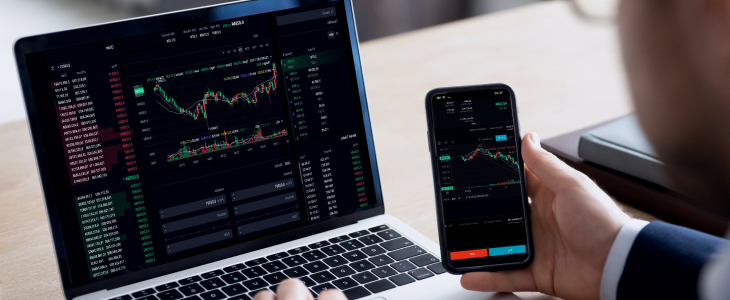
Unlocking Forex Trading Signals: Your Guide to Successful Trading
In the dynamic and fast-paced world of Forex trading, the ability to make informed decisions quickly is paramount. This is where forex trading signals Trading Platform TH comes into play, providing traders with tools and insights necessary to navigate the markets efficiently. Among the key tools available are Forex trading signals, which can significantly aid traders in maximizing their potential for profit.
Forex trading signals are indications or suggestions that help traders determine the likelihood of a currency pair’s movement. Signals can come in many forms, including technical analysis, fundamental analysis, and even market sentiment. In this article, we will dive deep into the significance of Forex trading signals, the various types available, how to interpret them, and best practices for their use.
What Are Forex Trading Signals?
Forex trading signals are essentially recommendations for entering a trade on a currency pair, generated from various sources. They are designed to help traders make decisions to optimize their trading strategies. Signals can indicate when to buy or sell a particular currency pair and often suggest entry and exit points, stop-loss orders, and take-profit targets.
Types of Forex Trading Signals
There are generally two main types of Forex trading signals: manual and automated. Manual signals are generated through individual analysis—charting, technical indicators, or economic news—while automated signals are produced by software that analyzes data based on pre-set criteria. Here’s a closer look:

1. Manual Signals
Manual signals rely on the trader’s expertise in reading charts and understanding the market. Experienced traders who observe price patterns, support and resistance levels, and market news can generate manual signals. This type of signal requires the trader to spend time analyzing the market, which can be both rewarding and time-consuming.
2. Automated Signals
Automated signals are generated by algorithms that analyze market conditions in real-time, providing signals based on predefined strategies. These signals can be integrated into trading platforms that allow for automated trading—saving time and reducing emotional bias in trading decisions. However, relying solely on automated signals may not always yield optimal results, as market conditions can be unpredictable.
Interpreting Forex Trading Signals
Understanding how to interpret Forex trading signals is critical for successful trading. Each signal typically includes the following components:
- Currency Pair: The specific currencies involved in the trade.
- Entry Point: The price at which a trader should enter the market.
- Stop-Loss Level: A price point where the trader will exit the trade to cut losses.
- Take-Profit Level: A price point where the trader will close the trade to secure profits.
- Time Frame: The recommended time frame for the trade, whether short-term, medium-term, or long-term.
By understanding these components, traders can make more informed decisions when responding to signals.

Sources of Forex Trading Signals
Forex trading signals can be sourced from a variety of platforms and experts. Here are some common sources:
- Brokerage Firms: Many brokers offer trading signals as a part of their service package. These signals are often based on their proprietary algorithms and market analyses.
- Signal Providers: Independent firms specialize in providing Forex signals based on their research and trading strategies. Some even offer subscription services where traders can receive regular updates.
- Trading Platforms: Many trading platforms have built-in signals based on technical indicators and charting tools that can be customized according to individual trading preferences.
- Social Trading Networks: Platforms that allow traders to follow and copy the trades of successful traders can also provide valuable insights and signals.
Best Practices for Using Forex Trading Signals
While Forex trading signals can provide significant advantages, it’s crucial to apply best practices for effective trading:
- Do Your Own Research: Always complement trading signals with your own analysis. Relying solely on signals can lead to missed opportunities or significant losses.
- Manage Risk: Use stop-loss levels as suggested in trading signals to protect your capital and manage risk effectively.
- Understand Market Conditions: Market conditions can change rapidly. Stay updated on relevant news and events that can influence currency movements.
- Stick to Your Strategy: Develop a trading plan and adhere to it. Avoid making impulsive decisions based on emotional responses to market movements.
- Keep Learning: Forex markets are constantly evolving. Stay informed about new tools, strategies, and technologies in trading.
Conclusion
Forex trading signals are powerful tools that can empower traders and enhance their ability to make informed trading decisions. Whether sourced through manual assessment or automated systems, understanding how to utilize these signals effectively can lead to more successful trading outcomes. However, it is essential to merge signals with comprehensive research and risk management strategies to achieve the best results. As you embark on your trading journey, consider leveraging platforms like Trading Platform TH to give you an edge in the Forex market.